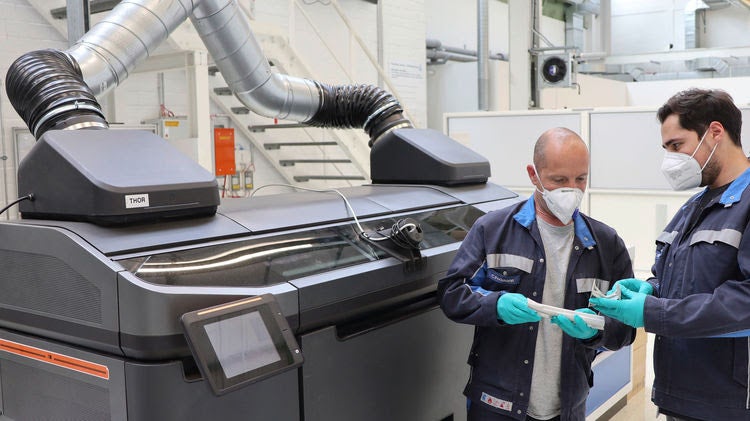
Volkswagen is is using a new process known as binder jetting to manufacture components at its main plant in Wolfsburg, Germany.
While conventional 3D printing uses a laser to build a component layer by layer from metallic powder, the binder jetting process uses an adhesive. The resulting metallic component is then heated and shaped. Using the binder jetting component reduces costs and increases productivity, the components weigh only half as much as those made from sheet steel.

Discover B2B Marketing That Performs
Combine business intelligence and editorial excellence to reach engaged professionals across 36 leading media platforms.
VW claims to be the only automaker using this 3D printing technology in the production process.
Christian Vollmer, VW brand production and logistics chief said: “Together with our partners, we aim to make 3D printing even more efficient in the years ahead and suitable for production line use.”
VW has invested “an amount in the mid-double-digit million euro range” over the past five years in 3D printing. It has expanded an existing collaboration with HP which is providing the high-tech printers needed and Siemens supplies the software for additive manufacturing. A key process step worked on jointly by Siemens and VW is optimising the positioning of components in the build chamber. Known as nesting, this technique makes it possible to produce twice as many parts per print session.
From summer, the three companies intend to establish a joint team at the 3D printing centre in Wolfsburg. The centre also trains employees in the use of these technologies.
By 2025, the aim is to produce up to 100,000 components by 3D printing each year. The first components made using the binder jetting process have gone to Osnabrueck for certification: components for the A pillar of the T-Roc convertible. These weigh almost 50% less than conventional components made from sheet steel.
VW has already successfully conducted crash tests on 3D-printed metallic vehicle components. Until now, the production of larger volumes was not cost-effective enough. However, the new technology and the collaboration will now make production-line use economically viable.






